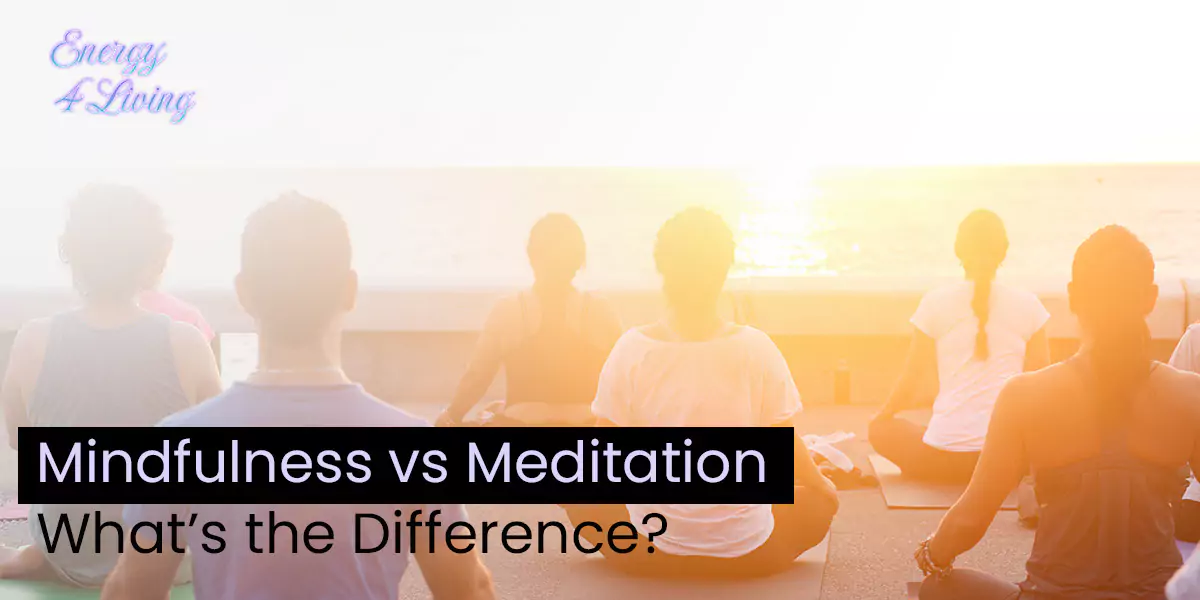We frequently come across terms like Mindfulness and meditation as we start on a journey of self-discovery and mental wellness. Although these terms are sometimes used interchangeably, they have distinct meanings and practices.
Consider Mindfulness the practice of being present in the Moment and appreciating each experience without judgment. Meditation, conversely, is the deliberate act of training the mind, often using techniques such as focused attention or guided imagery.
In this blog, we will learn about mindfulness vs meditation and how they complement each other in our pursuit of a more centered and harmonious life.
Key Takeaways:
- Meditation is a mental escape, a peaceful haven for your thoughts.
- Meditation comes in various flavors, like ice cream, each offering a distinct path to serenity.
- Being mindful means being fully present and appreciating each Moment without rushing.
- Mindfulness manifests itself in various ways, from conscious breathing to conscious eating.
- Both provide essential advantages such as pain relief, anxiety reduction, and improved emotional regulation.
- Mindfulness emphasizes being fully present, whereas meditation focuses on a specific thing.
- They are stress-relieving and recognize the connection between mind and body for overall well-being.
What is Meditation?
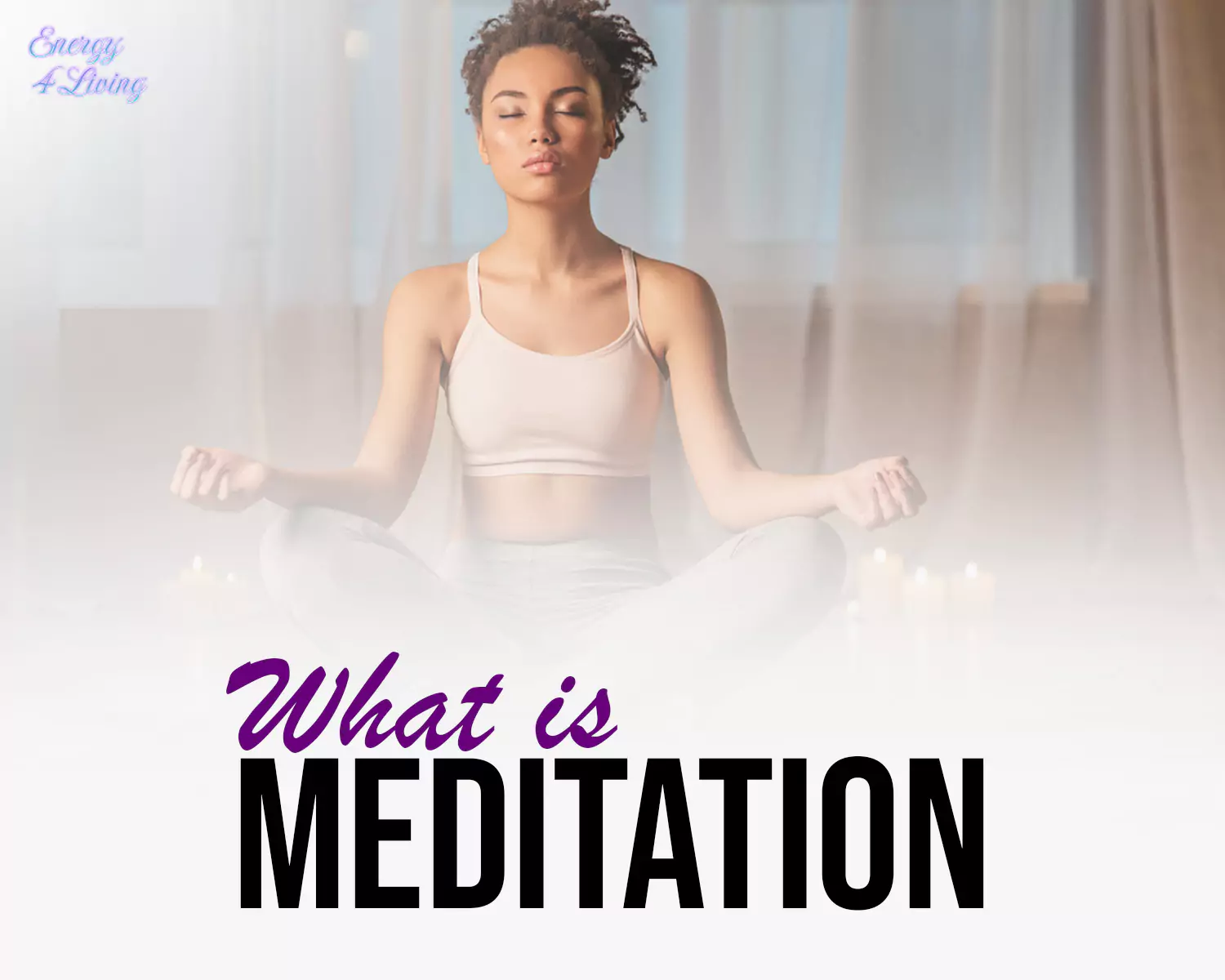
In simple terms, meditation is a peaceful mental escape. It’s similar to a mental workout, but you focus and find inner peace instead of lifting weights. Consider it a serene retreat for your thoughts, where you can escape the chaos and let your mind wander.
Meditation is the key to calming yourself down, whether sitting quietly, focusing on breathing, or using guided visualization. It is not a matter of emptying your mind but of finding a peaceful place within it.
So, when life’s hustle creates a storm, meditation is your refuge: a mindful pause for a healthier and happier life.
Types of Meditation
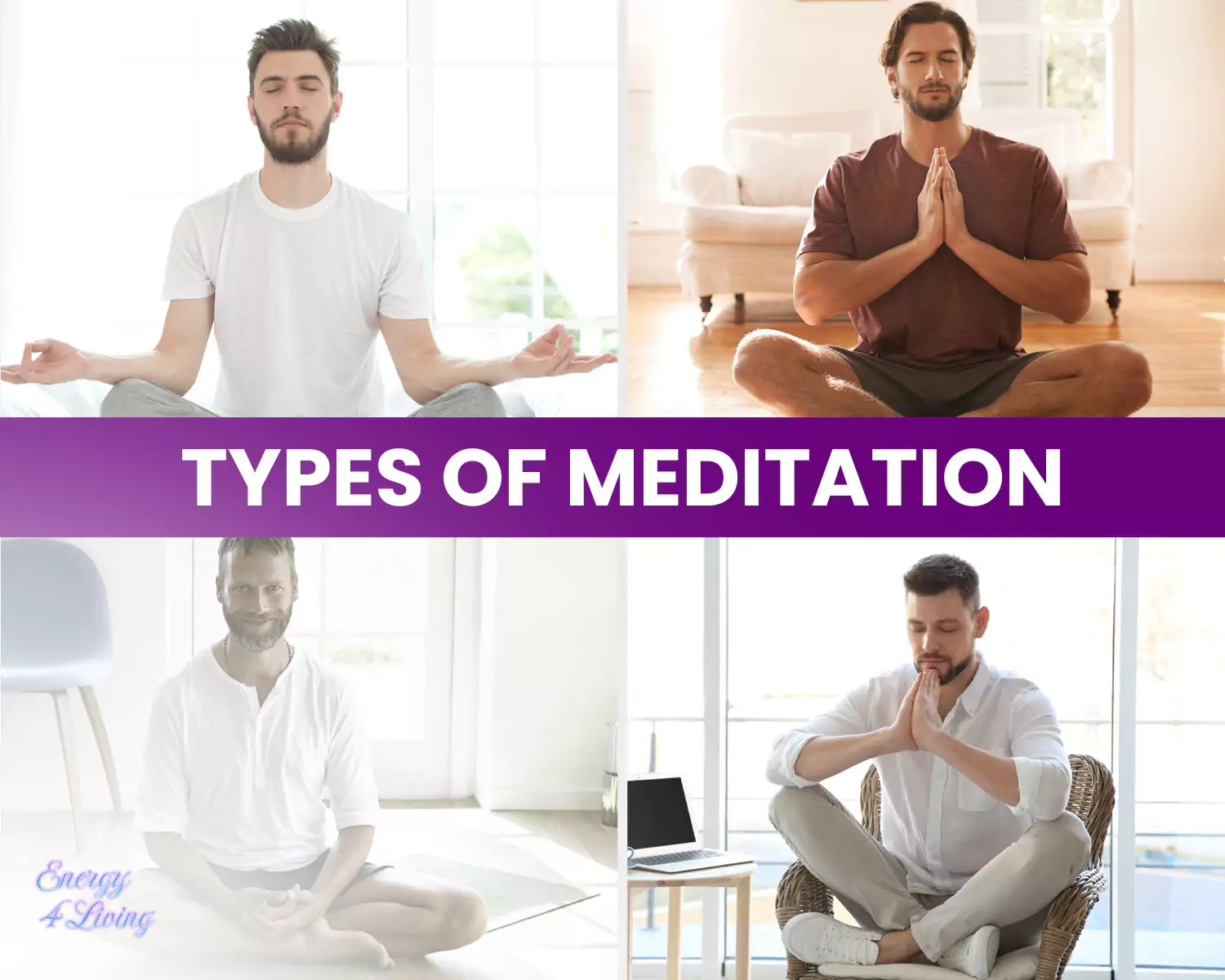 Meditation comes in a variety of flavors, just like ice cream! Each type has its unique way of bringing calm. It’s a buffet of peaceful possibilities, from focusing on your breathing to visualizing peaceful scenes. Let’s look at these different schools of thought, each with its flavor of tranquillity.
Meditation comes in a variety of flavors, just like ice cream! Each type has its unique way of bringing calm. It’s a buffet of peaceful possibilities, from focusing on your breathing to visualizing peaceful scenes. Let’s look at these different schools of thought, each with its flavor of tranquillity.
-
Mindfulness-Based Stress Reduction (MBSR)
Mindfulness-based stress reduction (MBSR) is a gentle guide to stress management. It consists of simple exercises, deep breathing, and focused attention on the present Moment. Consider it a mental spa day that will assist you in relaxing and healing.
It is also an excellent meditation for driving anxiety. MBSR entails living in the present Moment, reducing stress, and discovering your inner zen.
-
Focus Meditation
Focused meditation, like lifting weights, trains your mind to focus your attention. Meditation in the morning is the best way to start your day. It’s about teaching your brain to focus on one thing at a time, such as your breath, a word, or an image.
It’s a simple but effective exercise for sharpening your focus and dealing with chaos with a clear and focused mind. It’s like a mental superhero move for staying sharp and composed.
-
Tantra
Tantra, in meditation, is like a sacred dance of connection and energy. It goes beyond stereotypes by incorporating spirituality into the basis of daily life.
Tantra meditation promotes the integration of mind, body, and soul to understand yourself and others better. It is an exploration of consciousness that maintains a harmonious balance between the physical and spiritual realms, not just rituals.
Consider it a journey in which Mindfulness and holiness intersect, inviting you to enjoy the richness of life through increased awareness and connection.
-
Visualization Meditation
Visualization Meditation is comparable to creating a mental masterpiece. To do so, close your eyes and visualize scenes of calm, goals achieved, or positive outcomes.
It’s not just about the imagination when you enter this mental canvas; it’s about feeling the emotions associated with these images.
It is a powerful tool for achieving goals and relieving stress. It provides a relaxing escape into your imagination, where positivity and peace are brought to life through the art of your thoughts.
-
Mantra-Based Meditation
Mantra is a traditional meditation, a relaxing journey for the mind and soul. In this exercise, you play a relaxing melody by repeating a chosen word or phrase, also known as a mantra.
It’s not just the sound; the vibration and resonance create a peaceful mental space. All distractions fade away as you focus on the mantra and enter a calm state.
It is a timeless practice in all cultures that provides a harmonious rhythm that guides you to a place of inner peace and Mindfulness.
-
Mindfulness
Mindfulness is a mental superhero cape that allows you to stay present in the Moment. It entails paying complete attention to your thoughts, feelings, and surroundings without passing judgment.
Consider it a gentle anchor for your mind, guiding you away from stress and into a peaceful place of awareness. Each breath becomes a moment of peace as you practice Mindfulness, transforming your daily journey into a mindful adventure.
-
Relaxation
Mindfulness and relaxation are soothing balms for your overworked mind. When the stress gradually fades away, it’s like taking a short mental vacation. Relaxation is the art of turning off, whether it’s a quiet moment, deep breathing, or a cozy corner.
Consider it a gentle hug for your body and mind, allowing you to refresh and rejuvenate yourself. It’s just a break; it’s a way to find peace amid life’s chaos.
What is Mindfulness?
 Mindfulness is your ticket to a calmer mind amid daily chaos. It’s about being fully present as if you can savor every Moment without feeling rushed.
Mindfulness is your ticket to a calmer mind amid daily chaos. It’s about being fully present as if you can savor every Moment without feeling rushed.
Consider it a mental health day: no judgment, just pure awareness. Mindfulness becomes a calm guide through the ups and downs by paying attention to your thoughts and feelings without getting lost.
It’s not about getting rid of stress; it’s about changing your attitude. So be aware, take on today, and allow awareness to be your ally in becoming more balanced and peaceful.
Types of Mindfulness
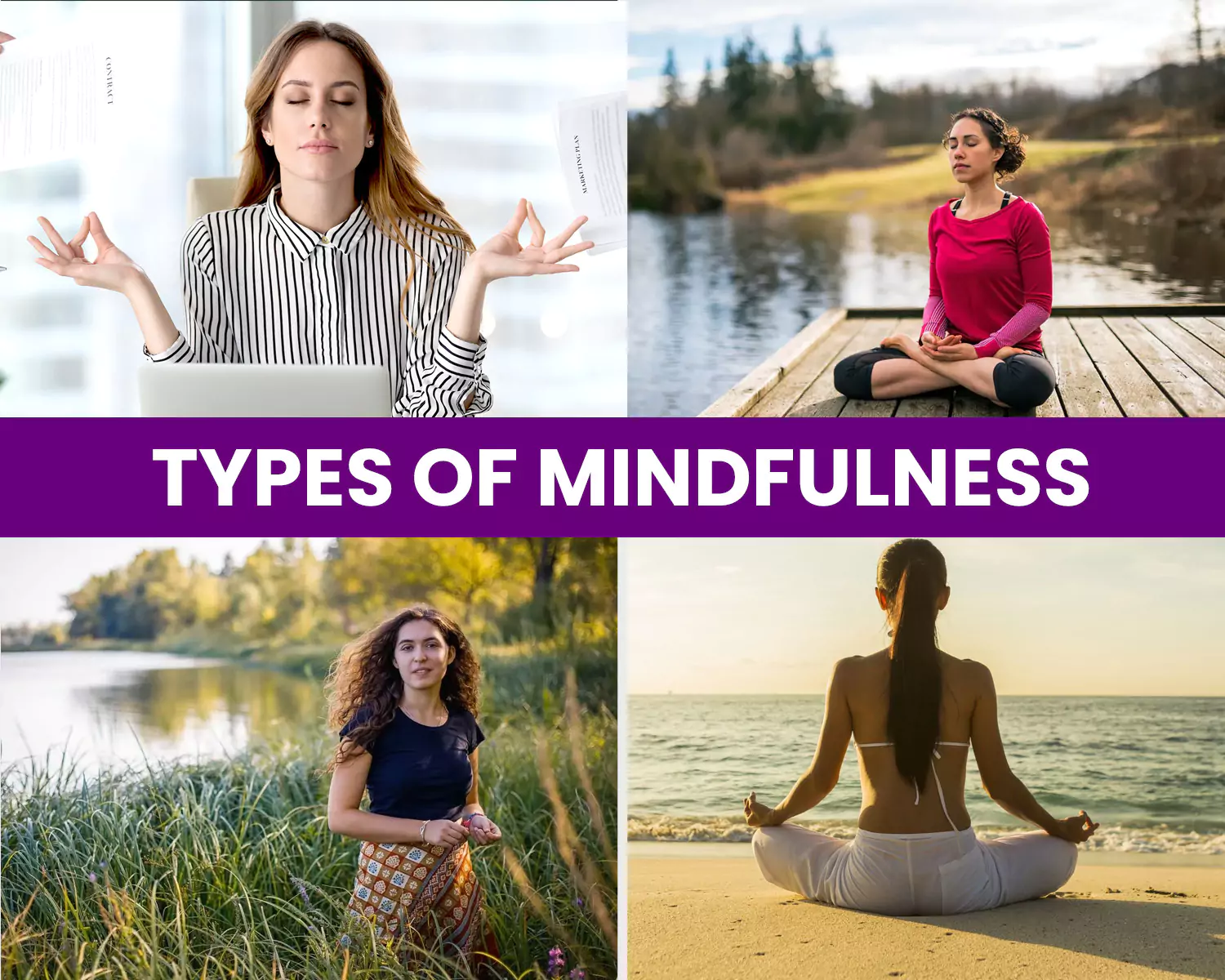
Enter the world of Mindfulness, where peace and variety coexist. Each type of Mindfulness is distinct, from mindful breathing to mindful eating. Let’s look at how you can incorporate Mindfulness into your daily life and create peace in simple moments.
-
Mindfulness-Based Cognitive Therapy (MBCT)
Mindfulness-based cognitive therapy (MBCT) is a gentle guide for your mind that incorporates Mindfulness with traditional cognitive therapy. It assists you in breaking free from negative thought patterns by encouraging present-moment awareness.
Consider it a toolbox for navigating emotions, providing a comprehensive approach to mental health. MBCT teaches you how to improve your resilience and promote a more balanced and positive outlook on life.
-
Samatha-Vipassana
In the world of meditation, Samatha and Vipassana are a dynamic duo. Like a gentle breeze, Samatha focuses on calming the mind through concentration, most often on breathing.
In contrast, Vipassana is an insight meditation in which you immerse yourself in a clear understanding of the mind and its experience.
They work together to create a balanced practice that combines calm and insight for a peaceful journey toward Mindfulness and self-discovery.
-
Qigong
Qigong is a graceful dance for your health. It combines gentle movements, deep breathing, and focused intention to cultivate energy flow, or “qi.” It is rooted in Chinese tradition.
Consider it a mindful exercise that balances the body and mind. Qigong is a holistic practice that promotes balance and vitality while inviting you to relax into a calm rhythm of health and Mindfulness.
-
Focused Mindfulness
Focused awareness directs attention to your mind and draws it consciously to the Present Moment. It’s similar to using a mental zoom to focus on specific thoughts, sensations, or activities.
This practice increases awareness and clarity by consciously choosing where to focus your attention. Consider it a mindful magnifying glass that allows you to investigate the richness of each Moment with a centered, mindful presence.
-
Walking Meditation
Walking meditation is a mindful stroll through peace. It’s a deliberate journey, not a race—one step at a time. Consider it a rhythmic dance with the earth beneath your feet that connects your mind and body.
You breathe in the present Moment with each step, leaving stress behind. It’s a moving meditation, a chance to center yourself and find peace by simply putting one foot in front of the other.
-
Acceptance Mindfulness
Acceptance awareness is your open-minded take on the present as it is. It’s like embracing reality mentally, letting go of resistance and judgment. Consider it a quiet surrender to the unfolding Moment, whether joyful or challenging.
This mindfulness practice promotes inner peace and resilience by accepting without attachment. It is an art to embrace the beauty and imperfections of the present Moment and dance in harmony with life.
6 Benefits of Mindfulness and Meditation
 Engaging in a mental and meditative journey is more than a trend; it is a gift to your well-being. These practices provide more than just moments of peace; they are essential for the body’s and mind’s numerous benefits.
Engaging in a mental and meditative journey is more than a trend; it is a gift to your well-being. These practices provide more than just moments of peace; they are essential for the body’s and mind’s numerous benefits.
Let’s look at the life-enriching benefits of Mindfulness and meditation, from stress reduction to improved focus to creating a calmer, more focused version of yourself.
-
Pain Relief
A beneficial balm awaits in mind and thought: pain relief. These practices become friendly allies, ensuring mental and physical well-being.
Mindfulness and meditation provide a way to reduce physical discomfort by cultivating awareness and promoting a harmonious connection with the present Moment.
It is a soothing journey that allows the potential for enlightenment and creates an oasis of calm amid life’s difficulties.
-
Anxiety and Stress
Fear and stress frequently take center stage in the vibrant symphony of life. Healing, on the other hand, comes from inner peace and meditation. These practices serve as gentle protectors, bringing comfort to overburdened spirits.
Accepting the present moment and calming the mental storm become practical tools for reducing anxiety and stress, opening the way for a more relaxed and focused life.
-
Depression
The mind and reflection emerge as sources of hope amid depression. By cultivating a deeper connection with the present, these practices gently illuminate the path to emotional well-being.
They become potent companions as you navigate the complexities of depression by cultivating Mindfulness and self-compassion, offering a journey toward healing, resilience, and a slow rebirth of your inner light.
-
Enhanced Emotional Regulation
Mindfulness and meditation act as emotional superheroes, assisting you in dealing with emotions with grace. These practices promote emotional awareness, a tool for better regulation.
It’s like having a calm friend inside you who enables you to respond to life’s ups and downs with resilience and a calm heart.
-
General Mental Wellness
Consider Mindfulness and meditation to be daily vitamins for your brain. These practices improve mental health by reducing stress, improving concentration, and encouraging a positive attitude.
They are a path to a more centered and happy self, not just an escape from the chaos.
-
Improved Sleep Quality
The peaceful integration of the mind and thoughts is the key to a good night’s sleep. These practices create a relaxing start to bedtime by calming the mind and relieving daily stress.
Consider it a sweet lullaby for your thoughts, resulting in better quality sleep and waking you up refreshed.
6 Differences Between Mindfulness and Meditation
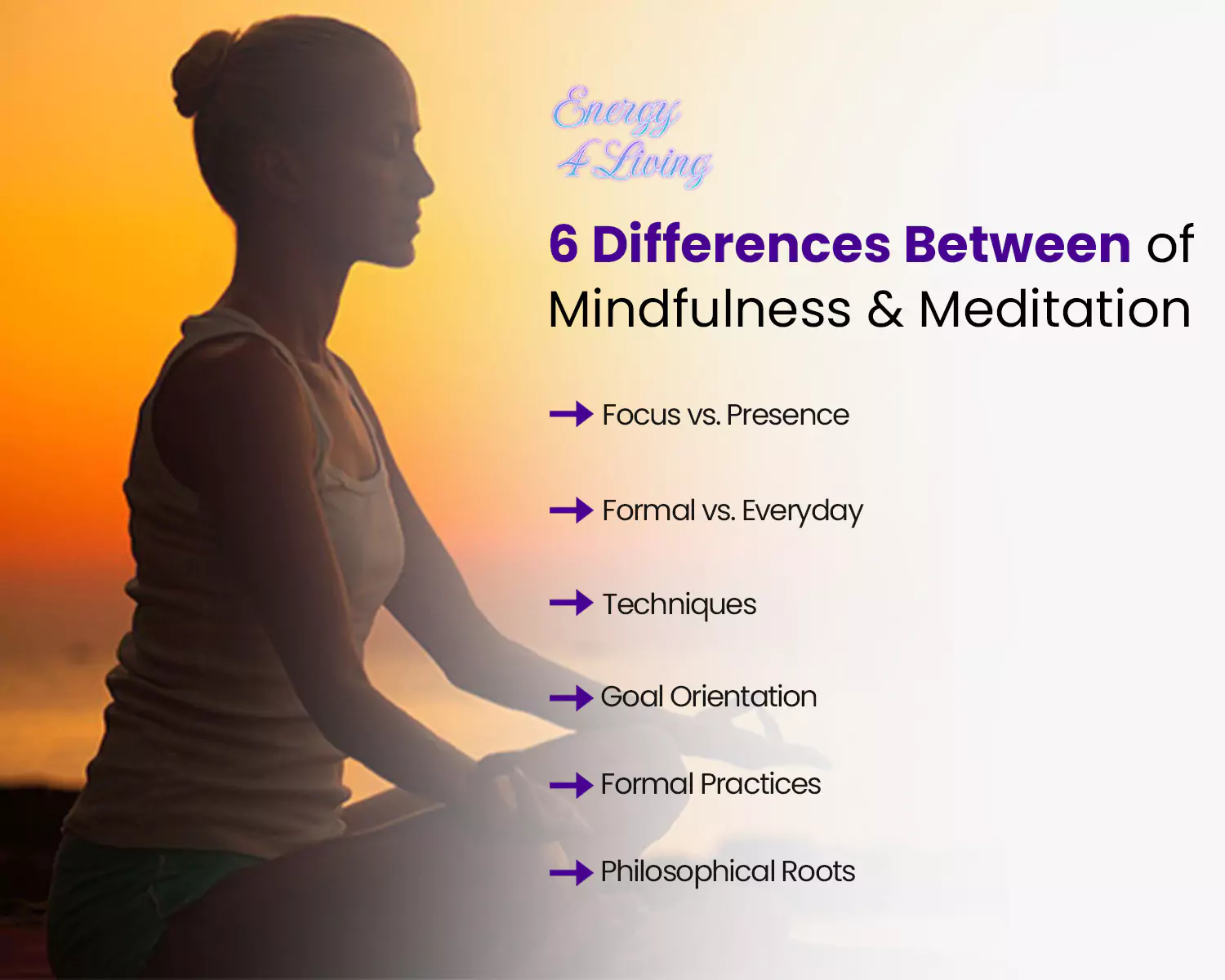 Mindfulness and meditation frequently go hand in hand on the path to mental wellness, but they each have distinct characteristics that distinguish them as distinct practices.
Mindfulness and meditation frequently go hand in hand on the path to mental wellness, but they each have distinct characteristics that distinguish them as distinct practices.
Following are the six differences between mindfulness and meditation:
- Focus vs. Presence: While meditation focuses on a specific object or thought, Mindfulness focuses on being fully present in the present moment and enjoying the entire experience without focusing on a single point to fix.
- Formal vs. Everyday: Meditation is frequently accompanied by a formal structure and dedicated sessions. Conversely, mindfulness is a versatile skill that can be easily incorporated into daily activities, turning ordinary moments into mindful ones.
- Techniques: Meditation techniques include breath awareness and guided imagery, among others. On the other hand, mindfulness can be viewed as a broader concept encompassing these meditation techniques while extending to a more general state of consciousness.
- Goal Orientation: Meditation frequently has specific goals, such as calming the mind or achieving a specific state. On the other hand, mindfulness does not always have a predetermined goal; it is more about living in the Moment without judgment.
- Formal Practices: Formal exercises such as sitting or walking meditation are commonly used in meditation. In contrast, Mindfulness can be applied informally to any activity, transforming everyday tasks into conscious possibilities.
- Philosophical Roots: Meditation frequently has cultural or religious overtones and can be associated with specific traditions. Although Mindfulness has Buddhist roots, it has become more secular and thus accessible to a broader audience.
6 Similarities Between Mindfulness and Meditation
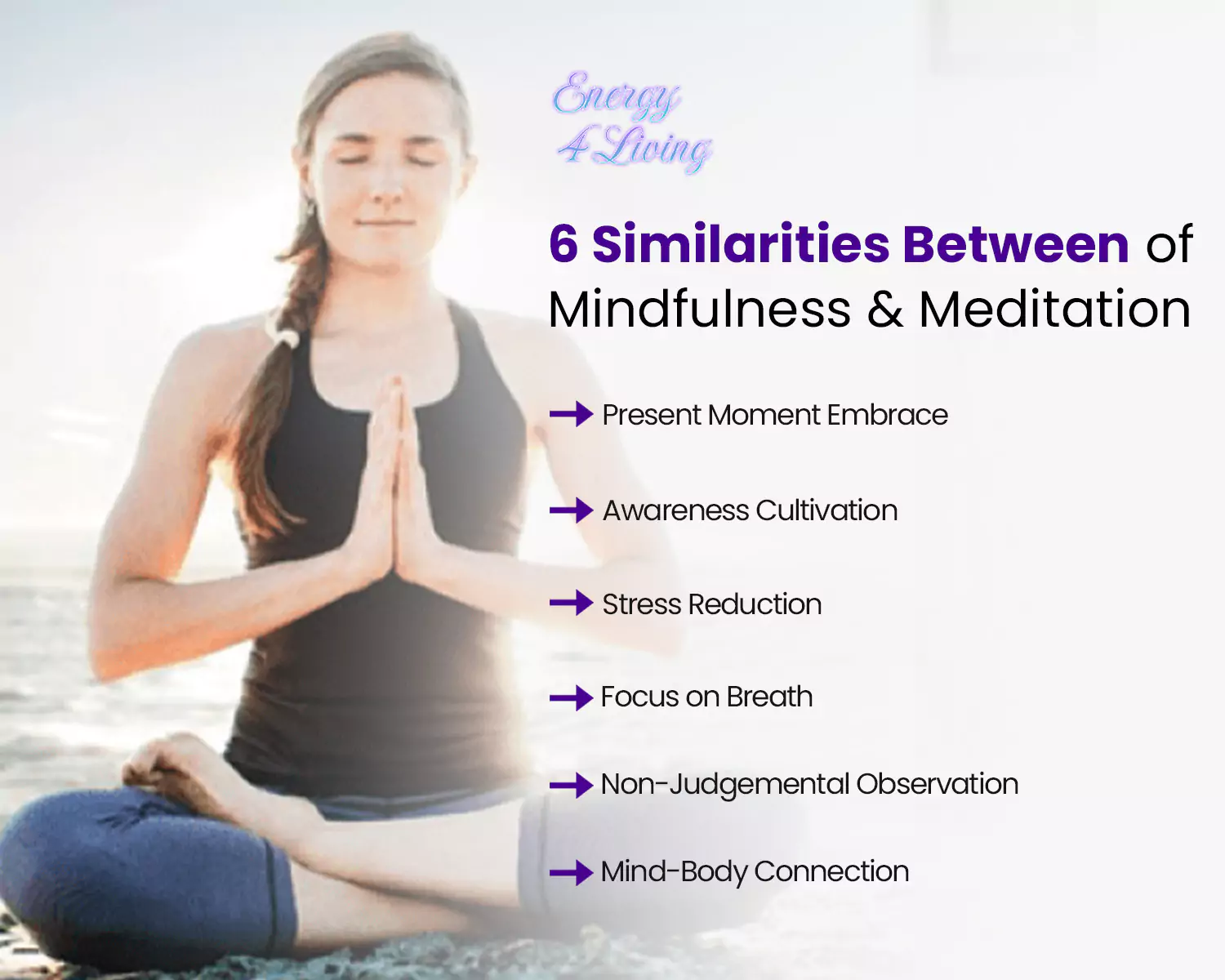 Mind and soul find common ground and reconnect with old friends on the journey of well-being in the tranquil realm of self-discovery and peace.
Mind and soul find common ground and reconnect with old friends on the journey of well-being in the tranquil realm of self-discovery and peace.
We’ll point out six significant similarities that make these practices a perfect match:
- Present Moment Embrace: Mindfulness and meditation encourage you to stay in the present moment and enjoy the richness of your experiences rather than getting caught up in the past or the future.
- Awareness Cultivation: The key is to increase your awareness and develop a deep connection with your thoughts, feelings, and surroundings, whether you follow a guided meditation or pay attention to your daily activities.
- Stress Reduction: Mindfulness and meditation are effective stress relievers that provide a relaxing escape from the stresses of everyday life. They relieve stress from the vortex by grounding you in the present Moment.
- Focus on Breath: Both exercises frequently emphasize breathing, and the rhythmic flow ensures that the user’s attention is maintained and they feel calm.
- Non-Judgemental Observation: It is observation without judgment, whether you meditate or practice Mindfulness. It’s about allowing ideas to come and go without labeling them.
- Mind-Body Connection: Both the mind and the soul recognize the intimate relationship between body and spirit. They take a holistic approach to wellness and recognize the link between mental and physical health.
How Our App Can Help You Achieve Your Mindfulness and Meditation Goals
With the Energy Alchemist app, you can access transformative energies 24 hours a day, seven days a week. Sign up for €5 per week and receive high vibrational healings that address various aspects of wellbeing.
Our app covers everything from antimicrobial detox to chakra balancing. Use the 51 quick links, scroll through them while sleeping, and allow the healing to occur on both a physical and energetic level.
Our app can be easily integrated into your mindfulness and meditation routine with recommended daily use and a low-volume setting. Contact Stacy now and enter the world of holistic wellness!
After Skyping clients worldwide in the last 2 years, We have realized people need healing on all levels regularly. You can now access Healing 24/7 through the Energy Healer App.
Eleven quick links are energized vibrationally, always to hold the highest vibration.
- 4 Main Elements -Antimicrobial Detox -Over 90 % of the Human Body comprises Oxygen, Carbon, Hydrogen, Nitrogen, Calcium, and phosphorus. Vit D, Magnesium, Sulphur – Human Body over 60% water – Extracellular Hydration -Sodium, Intracellular Hydration- Potassium.
- Healthy gums and teeth
- Aerobic Cellular Respiration
- Negative Ions.
- Clear Vision – Eyes
- Strong, Healthy Connective tissue
2. Brain Clearing – Brain balancing – Interweaving right & left brain for perfect symmetry of balance – Balancing Limbic system (emotional brain) – 6 Essential areas – Thalamus – processing, Hippocampus– Memory, Prefrontal Cortex – Cognitive abilities, Cerebral Cortex – Higher level processes, Cerebrum – Muscle Movement – regulates temperature, Cerebellum – Balance – 10 % of brain volume – over 50 % of neurons of the brain, Brain stem- Neuroprotectant through Neural pathways.
- 4 Lobes
- Amyloid plaque from Neurons
- Addiction3.Stress & Anxiety – Balancing HPA Axis – Hypothalamus, Pituitary gland, Adrenals, balancing Brain stem – Controls vital functions – Breathing, Heartrate, Blood Pressure, Consciousness, sleep, Dopamine & Serotonin Levels, Balance, and Toning Vagus nerve for Parasympathetic Nervous system.
- Dopamine Pathways & Receptors
- Nervous system reset
- Release Somatic tension4.Detox & Immune – Detox at Cellular Level, Vit C, Vit E, Selenium, Zinc, Copper, Iron, Expansion Thymus, Innate & Adaptive Immune functions – Lymphocytes into Lymph nodes – Immune Tonic.
- Parasitic cleanse
- Balance Mast cells
- Cellular Inflammation and lymphatic drainage
- Auto-immune
- Carbon – Oxygen
- Catechins5.Endocrine System – Hormone balancing – Balance of Endocrine through Hypothalamus & Pituitary Gland, balance of major hormones.
- Energizing and revitalizing Adrenals
- Fat burning -Metabolism
- Spindle Muscles6.Heart & Lung function – Oxygenating Lungs – Repair, Oxygenate & Energise Heart – strengthen Myocardium, Energy to help remove Heart scarring.
- Strong, Healthy Pancreas & Spleen7.Liver, Kidneys, & Arteries – Balance Liver Enzymes and amino acids. Liver tonic- Filter Kidneys- tonic-cleanse build up in Arteries.
- Strengthen the Bladder and pelvic floor.
- Healthy functioning Bowel and Colon cleanse.
- Balance Uric acid
- Healthy balance Triglycerides8.Balance of Ph in the body – Blood Cleanse, Ph of blood & Body 7.4, Ph of stomach 2.5 – B6, B12 & DNA Healing.
- Oxygenated Stem cells via Bone marrow
- Epstein Barr virus
- Healthy Cells9.Digestive, Respiratory & Circulatory Systems -Strengthen to provide Energy to the Cells- Digestive Enzymes.
- Reseeding Healthy Gut Microbiome.
- Varicose Veins.
- Healthy Intestinal Epithelium & Duodenum.10.Healing for general Well-being and pain
- Happy Endorphins.
- Old Physical Pain & Emotion.
- Past life Healing11.Grounding, Chakras & Meridians – Grounding into the heart of Mother Gaia, Balancing Chakras, Energising chakras including Star Chakra above the crown – Gateway to Divine Love & Spiritual wisdom, Balancing & Energising Meridians – Increasing Qi (life force) – Bring balance to the nervous system.
- High Vibrational Abundance
- Protection from Negative Energy Forces
- Set free Soul pain
- 3rd Eye Activation
- Cleansing Auric layers
- Akashic Power Remembrance
Conclusion
The distinction between awareness and meditation becomes a dance of unity and oneness in the serene web of self-discovery. Even though meditation is a subset of Mindfulness, both tools are invaluable on the path to inner peace.
Whether you find solace in focused meditation or incorporate Mindfulness into your daily life, these practices all lead to the same place: a peaceful state of being in which the mind finds rest and the heart finds its peace.
